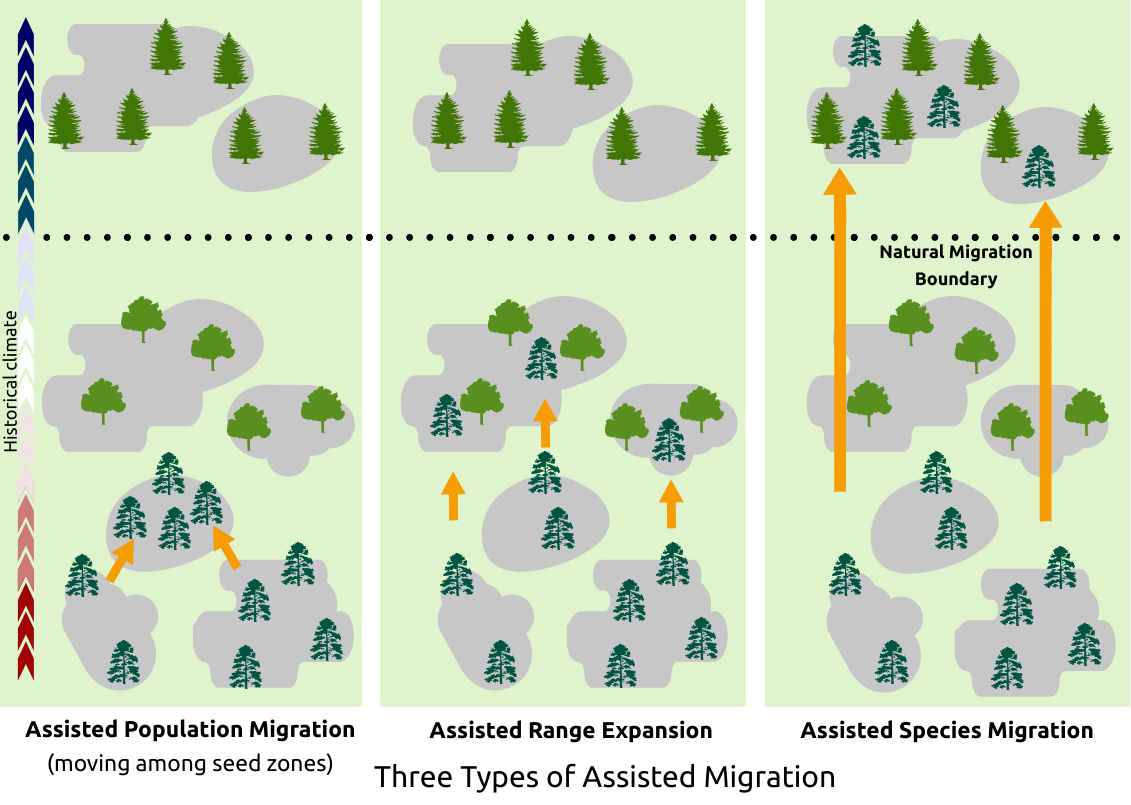April 06, 2023, 09:00 AM – 4:00 PM
09:00 – 09:30 Logistics and Introductions
- Co-Moderators, Weikko Jaross (LandVest) and Kevin Ceder (Woodland Creek Consulting)
- Venue – Western Forestry and Conservation Association – Richard Zabel
- Introductions
9:30 – 12:00 (4-5) Growth Model Updates (30-Minutes Each)
A whole stand growth model for natural silver birch regeneration – Dr. Karol Bronisz (Warsaw University Of Life Sciences, Poland). Abstract forthcoming.
Development of models to predict tree crown variables for Maritime pine – Muha Abdullah Al Pavel (University of Lisbon). A system of equations to predict crown ratio, crown length and height to the base of the crown in a compatible manner for Maritime pine in Portugal.
Forest Projection System: Traditional Site Curves in FPS – Dan Opalach (Forest Biometrics Research Institute) Dan has developed methods for using traditional site index curves to drive the height growth in FPS. His will demonstrate his “crosswalk” table approach to determine the SITE_PHY, SITE_SHP, and PctHt from a Pacific Northwest timber cruise.
Multistage modeling improves individual tree mortality predictions – Cen Chen (University of Maine). Individual tree mortality plays a fundamental role in the forest growth model dynamics yet is one of the most difficult phenomena to accurately model. Chen and colleagues’ results indicate the multistage approach more closely depicts observed mortality and shows a notable improvement from the conventional approach in the Acadian region.
FVS Acadian Variant – Ben Rice (Midgard Natural Resources). The Acadian Region of Maine is characterized by extensively managed naturally regenerated forests comprised of mixed species and multicohort structures in a complex of topography, soil parent material, and climatic zones. The Northeast Variant of the Forest Vegetation Simulator (FVS-NE) has a long history and covers a broad geographic region with previous testing indicating potential shortcomings in the Acadian Region. Since 2008, efforts at the University of Maine and New Brunswick have focused on developing a FVS variant specific to the Acadian Region (FVS-ACD). Ben’s presentation will review the progress on model components and recent updates and a more general look at the FVS framework that supports FVS-ACD.
Open Discussion – Growth Model Updates, Q&A (Kevin Ceder Moderator)
12:00 – 1:00 Break for Lunch
1:00 – 2:30 (3) Data Processing Tools, Model I/O (30-minute each)
Investigating the 3% Growth Rate Assumption. Nate Herring (American Forest Management). The 3% rate of change for basal area, volume, weight, and mortality is commonly assumed in the US South and beyond to project natural hardwood stands. This presentation will test the 3% assumption using USFS FIA data and evaluate regional growth models like FVS, SOHARC, and USFS yield tables. Nate will demonstrate how he used the rFIA package to build a data set to test the 3% growth assumption.
Biomass from western dry forests: spatially-explicit yield projections from the FIA, FVS, TreeMap modelling ecosystem – Reid Lewis (PhD student, Yale’s Forest School). This talk explores how we can use a recent USFS product – TreeMap 2016 – to create spatially-explicit models of available biomass from forest restoration treatments. We use TreeMap and ArcGIS Pro to identify most-similar FIA plots for each 30m pixel within the region(s) of interest. We then model forest restoration treatments with FVS using data from FIADB, and remap these results to their correlated pixels with TreeMap.
A treelist imputation framework for a remotely-sensed forest inventory – Jacob Beard (Washington State Department of Natural Resources). Following on the work initiated by Kate McBurney and Peter Gould, Jacob will present considerations in preparing the stand level FVS ready treelists including the development and testing of innovative approaches for assigning plots to a remotely-sensed inventory across eastern Washington forested Statelands.
Open Discussion – Data Processing, Q&A (Weikko Jaross Moderator)
15 Minute Break
2:45 – 3:45 (4) Growth Model Updates (continued) (30-Minutes Each)
FVS Alaska Variant: New Models – Mark Castle (Forest Vegetation Simulator Group, USFS) “From 2018 to 2021, new relationships were developed for twenty-three species commonly found in the coastal and northern boreal forest types of Alaska. In 2021, the Alaska variant was released to model forested conditions throughout all of Alaska. Mark Castle led the development work with notable contributions from Mike Shettles, Aaron Gagnon, Lance David, Chad Keyser and others who helped fit and embed new relationships in this new variant.
Climate FVS Simulations for Stimson Inland Lands – Don Patterson (Stimson Lumber Company, Inc.) As part of our efforts to comply with Climate Smart Forestry SFI obligations, we have investigated the potential impacts of climate change on long term growth and mortality using Climate FVS across 400,000 +/- acres in eastern Washington, northern Idaho and northwestern Montana. Through a standard set of silviculture prescriptions both with and without climate adjustments, this work highlights the sensitivity of Climate FVS to the dClim rule.
The Tree and Stand Simulator (TASS): Seeing the light of complex stands – Jeff Stone (Stand Development Modelling Research Scientist, BC Ministry of Forests, Victoria, BC) Jeff will provide a brief overview of TASS’s distinctive structure and discuss how some of the challenges, such as the computational needs of the underlying light model, have been addressed to advance the modelling of complex stands.
incorporation of crown ideotype into CIPSANON – Doug Mainwaring (Center for Intensive Planted-forest Silviculture) Doug will provide a brief overview of CIPSANON and a preview of the new crown ideotype work including preliminary measurements and intended methods.
Open Discussion – Model Updates, Q&A (Kevin Ceder Moderator)
3:45 – 4:00 House Keeping Items – (Weikko Jaross Moderator)
- Words from our GMUG 2023 sponsor (LandVest)
- Feedback on agenda and venue
- Ideas for new topics to discuss in 2023
- When next to meet again?




